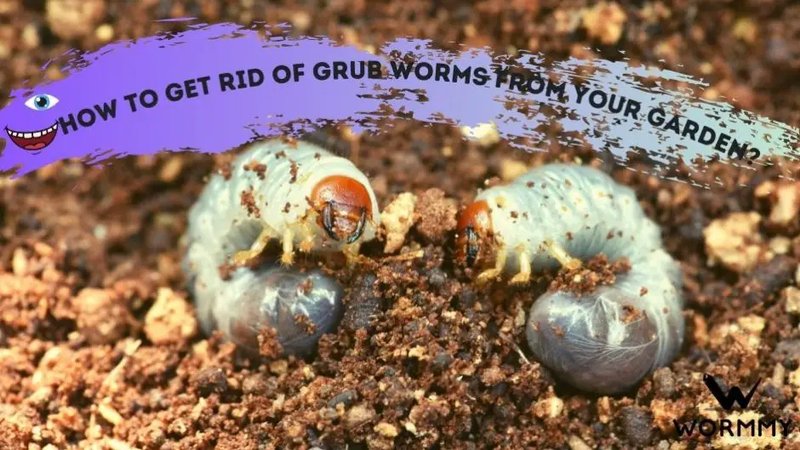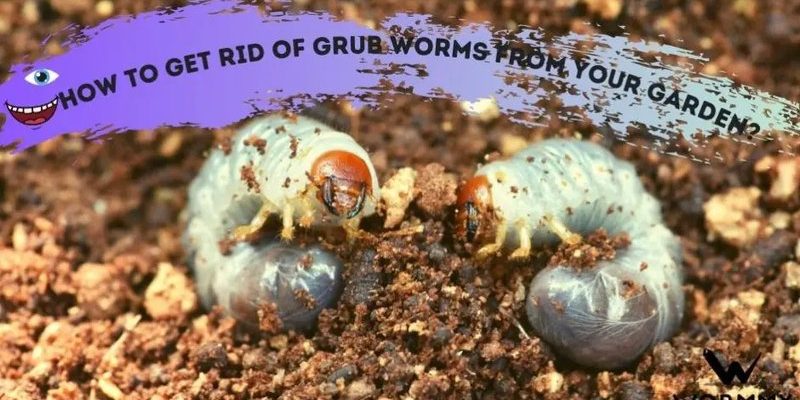
Grub worms, often the larval stage of beetles, can wreak havoc in your garden by feeding on plant roots. This can hinder plant growth, leading to wilting or even death. However, understanding how to manage these garden pests can keep your plants healthy and thriving. Think of it as a battle plan—you’ll learn how to identify them, why they’re there, and the best methods to get rid of them, ensuring your garden remains a vibrant sanctuary for your plants.
What Are Grub Worms?
Grub worms are primarily the larvae of various beetle species. The most common culprits in gardens include the Japanese beetle and the June beetle. These worms tend to be cream or white-colored with a C-shape body and can grow up to an inch long. They live in the soil, often just below the surface, where they feast on the roots of plants, which can lead to a range of issues for gardeners.
You might be wondering how these little guys end up in your garden. Female beetles lay their eggs in the soil, and when the eggs hatch, the young grubs begin their feast. They prefer moist, nutrient-rich soil, which is often found in well-maintained raised garden beds. So, while you’re creating a perfect environment for your veggies, you may be unwittingly inviting these pests, too.
How to Identify Grub Worms
Identifying grub worms is easier than you might think. If you notice wilting or yellowing plants, or even patches of dead grass in your garden, it’s time to investigate. Here’s how to spot them:
- **Look for visible signs**: Gently dig up the soil around the roots of your plants. If you see small, white, C-shaped worms, those are likely the grubs.
- **Pay attention to the soil texture**: Healthy soil should feel crumbly and rich. If it feels spongy or overly moist with a foul smell, that might be a sign of pest problems.
- **Check for adult beetles**: In the summer, if you start seeing adult beetles flying around your garden, that can indicate a pending grub issue as their eggs might be in the soil.
Taking a proactive approach by regularly checking your plants and soil can save you from a bigger headache down the line.
Why Are Grub Worms a Problem?
Here’s the thing: grub worms aren’t just a nuisance; they can be a real threat to your garden’s health. When they feed on plant roots, they can cause serious damage. This stress on your plants can lead to various problems:
- **Stunted growth**: Without a strong root system, plants can’t absorb nutrients effectively, leading to poor growth and yield.
- **Wilting**: As roots become damaged, plants may not be able to retain moisture, causing wilting even when watered.
- **Increased susceptibility to disease**: Stressed plants can attract diseases that can further damage or kill them.
Understanding the impacts of these pests is crucial. It’s not just about getting rid of them; it’s about safeguarding the future of your garden.
How to Get Rid of Grub Worms
Now, let’s talk about action. Getting rid of grub worms doesn’t have to be a daunting task. Here are several effective methods you can try:
Natural Remedies
One of the best approaches to tackle grub worms is using natural remedies:
- **Beneficial nematodes**: These microscopic worms are natural predators of grubs. You can introduce them to your garden soil, and they’ll seek out and destroy grub worms.
- **Diatomaceous earth**: Sprinkling this natural powder onto the soil can dehydrate and kill grubs when they come in contact with it.
- **Companion planting**: Certain plants, like marigolds, can deter beetles from laying eggs in your garden, thus reducing grub populations.
Using natural methods not only helps in controlling grub worms but also keeps your garden chemical-free.
Cultural Practices
Adjusting your gardening habits can also help prevent infestations. Here’s how:
- **Rotate your crops**: Changing the type of plants in your raised beds each year can disrupt the life cycle of grubs.
- **Maintain healthy soil**: Regularly composting and mulching can improve soil quality, making it less hospitable for pests.
- **Water wisely**: Overwatering can create a perfect environment for grubs. Make sure to water deeply but not too frequently.
By taking care of your garden’s health, you can make it less inviting for these pests.
When to Seek Professional Help
Sometimes, despite your best efforts, grub worms can be a persistent problem. If you’ve tried various methods but still see little improvement, it might be time to consider professional help. Here are some signs that professional intervention might be necessary:
- **Severe infestations**: If you’re finding grubs in large numbers, your garden may need a more aggressive treatment approach.
- **Recurring issues**: If grubs have become a regular problem in your garden year after year, a pest control service can implement long-term solutions.
- **Concerning plant health**: If most of your plants are wilting, turning yellow, or dying despite your efforts, it might be time to consult an expert.
Investing in professional pest control can save your hard work and help restore your garden’s vitality.
Preventing Grub Worms in the Future
After you’ve dealt with existing grub worms, the next step is prevention. Here are some strategies to keep your garden safe:
- **Use organic fertilizers**: These not only boost plant health but also make soil less attractive to pests.
- **Encourage natural predators**: Birds, toads, and other wildlife will help keep grub populations in check.
- **Regularly check for signs**: Keeping an eye on your plants and soil can help you catch any future issues early on.
By being proactive, you can create a flourishing garden that stays healthy season after season.
In conclusion, dealing with *grub worms in raised garden beds* doesn’t have to be a nightmare. By understanding these pests, knowing how to identify them, and taking necessary preventive measures, you can ensure your garden remains a thriving paradise. Remember, gardening is all about patience, care, and a little bit of problem-solving. So grab your tools, and let’s keep those grubs at bay!

